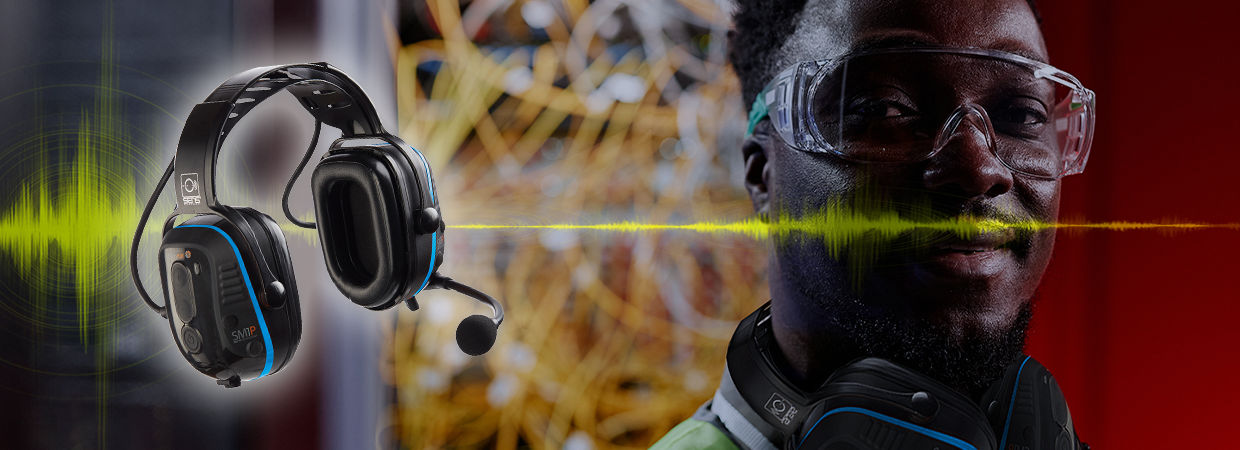- Home
- Blog
- Noise-Induced Hearing Loss
- 5 Myths About Noise-Induced Hearing Loss

5 Myths About Noise-Induced Hearing Loss
As mentioned in our overview blog of noise-induced hearing loss, sometimes we experience very loud noise which, even for a brief amount of exposure, can temporarily or permanently damage our inner ears causing noise-induced hearing loss (NIHL). There are often misconceptions about NIHL, but we will debunk these myths.
Myth 1: Hearing Loss is Inevitable, Especially with Age, and Can't Be Prevented
Hearing loss has many causes, including genetics, certain medications, and exposure to loud noises. Noise exposure is the most preventable cause of hearing loss. In fact, NIHL is the only 100% preventable type of hearing loss. With the right hearing protection, workers can avoid NIHL altogether. Sensear's Smart Communication Headsets and Earplugs with SENS® Technology are used for hearing protection up to 36dB NRR and headset-to-headset communication while maintaining 360° situational awareness to provide workers personal safety and effective communication in high noise environments.
Myth 2: Everyone Who has Hearing Loss is Older than Age 65
In actuality, according to the National Institute on Deafness and Other Communication Disorders (NIH), one in eight people in the US (that's 13% or 30 million people) age 12+ years has hearing loss in both ears. Additionally, about 2% of adults between 45-54 years old have disabling hearing loss which rises to 8.5% for those between 55-64 years old. Furthermore, about 18% of adults between 20-69 years old have speech-frequency hearing loss due to 5+ hours of exposure to very loud noise at work. No matter how old you are, high noise will damage your hearing, and OSHA requires hearing protection for anyone exposed to noise levels of 85+ dB(A) for more than 8 hours. Sensear's innovative SENS® Technology brings low-noise hearing experiences into high-noise environments by isolating and enhancing speech while reducing harmful background noise.
Myth 3: Everyday Loud Activities Don't Affect Your Hearing
NIHL can be caused by a number of sources such as lawn/farm equipment, concerts, sporting events, firework shows, and firearms. Any type of long-term exposure to noise can affect your hearing. A single exposure to excessive noise can also cause permanent hearing loss. Our inner ears are tiny and fragile, containing microscopic hair-like projections called stereocilia. NIHL happens when these tiny hair cells are damaged and die. Unlike most hair cells on our bodies, these do not regrow once they have been damaged.
Myth 4: Hearing Loss Doesn't Affect the Rest of My Health
Untreated hearing loss increases one's risk of experiencing cognitive decline, dementia, dizziness, balance disorders, falls, social isolation, and depression. Additionally, hearing loss can take away your ability to be aware of your surroundings. Knowing what is going on around you and being able to identify and respond to critical safety hazards is vital when working in high-noise environments. SENS® determines the nature, distance, and directionality of all sounds including speech, machinery/vehicles, and alarms.
Myth 5: NIHL is Immediately Noticeable
NIHL is the result of years of exposure to loud noise and isn’t noticed until a family member, friend, or co-worker points out common signs of hearing loss. However, once the damage has occurred, it is irreversible. Understanding noise hazards and protecting yourself in a high-noise environment can go a long way to avoiding incidences of NIHL. There are key methods that will help you avoid NIHL, including implementing Sensear's high-noise hearing protection, communication, and 360° situational awareness solutions.
Preventing NIHL in the Workplace
To decrease the risk of hearing loss in such circumstances, you must get in the habit of using the right kind of hearing protection. Protective earplugs and headsets can make an important difference in protecting your ear health. Most protective equipment does not work effectively for hearing-impaired individuals using hearing aids and can cause more harm than good if they remove these devices in high-noise environments. This is not the case with Sensear’s Smart Communication Headsets, as our headsets pair well with hearing aids.
SENS® suppresses noise in the surrounding environment while allowing users to still communicate with each other. The innovative SENS® works by limiting loud background noises while processing and separating speech, allowing you to hear speech, alarms, or other important sounds. This is perfect for potentially dangerous environments such as factories, heavy industrial sites, etc. where you need to be able to hear your coworkers yet require loud machinery noises to be suppressed. With SENS®, you can have complete 360° awareness of everything around you, ensuring you can hear speech and stay protected.
Use our Hearing Protection Calculator to calculate the sound level at the ear when wearing hearing protection. If your HPDs are not providing the correct level of hearing protection for your workers, choose the right hearing protection and prevent hearing loss. Contact us today for a free consultation to discuss your concerns or download our Buyer’s Guide to Communication Headsets.









